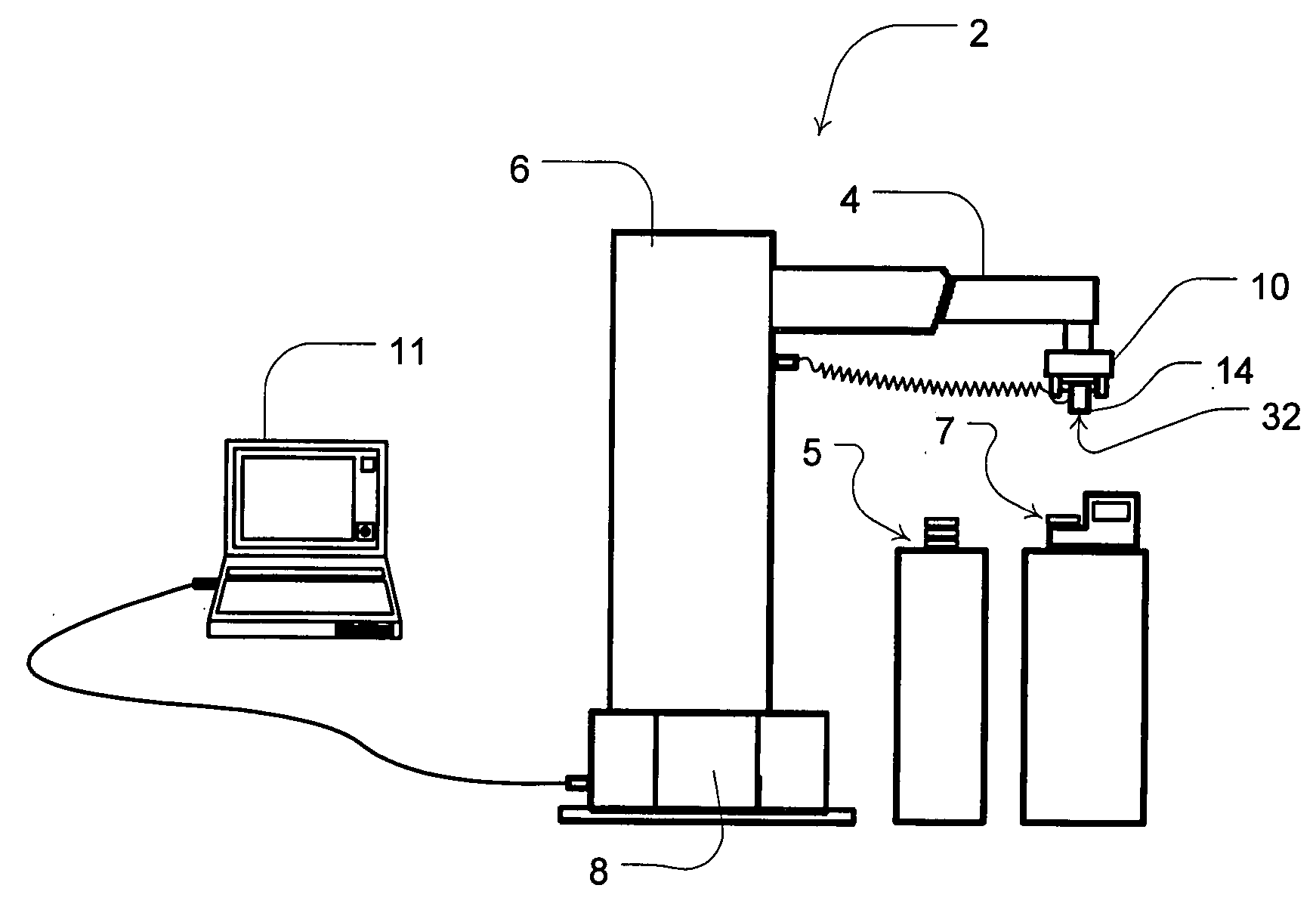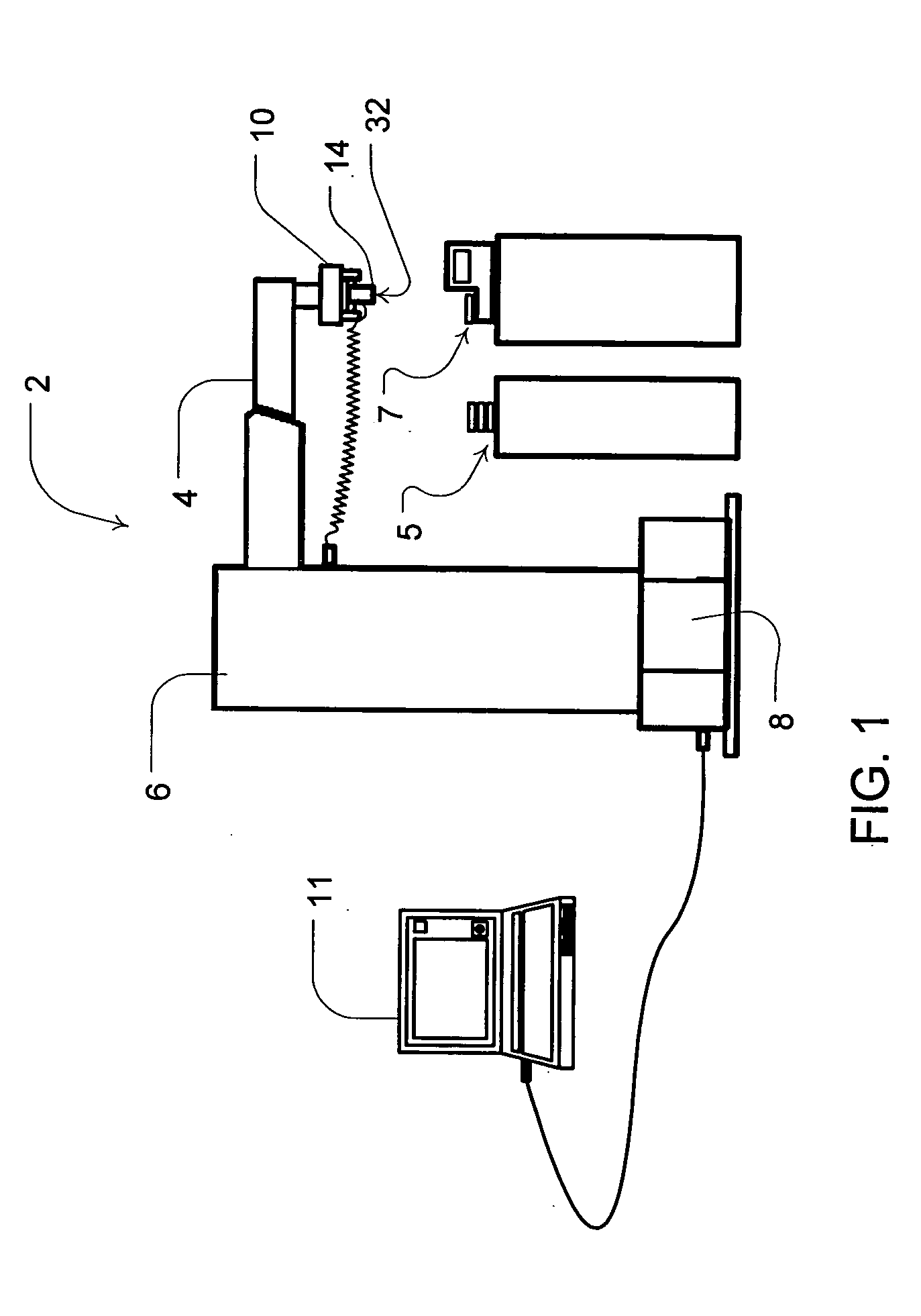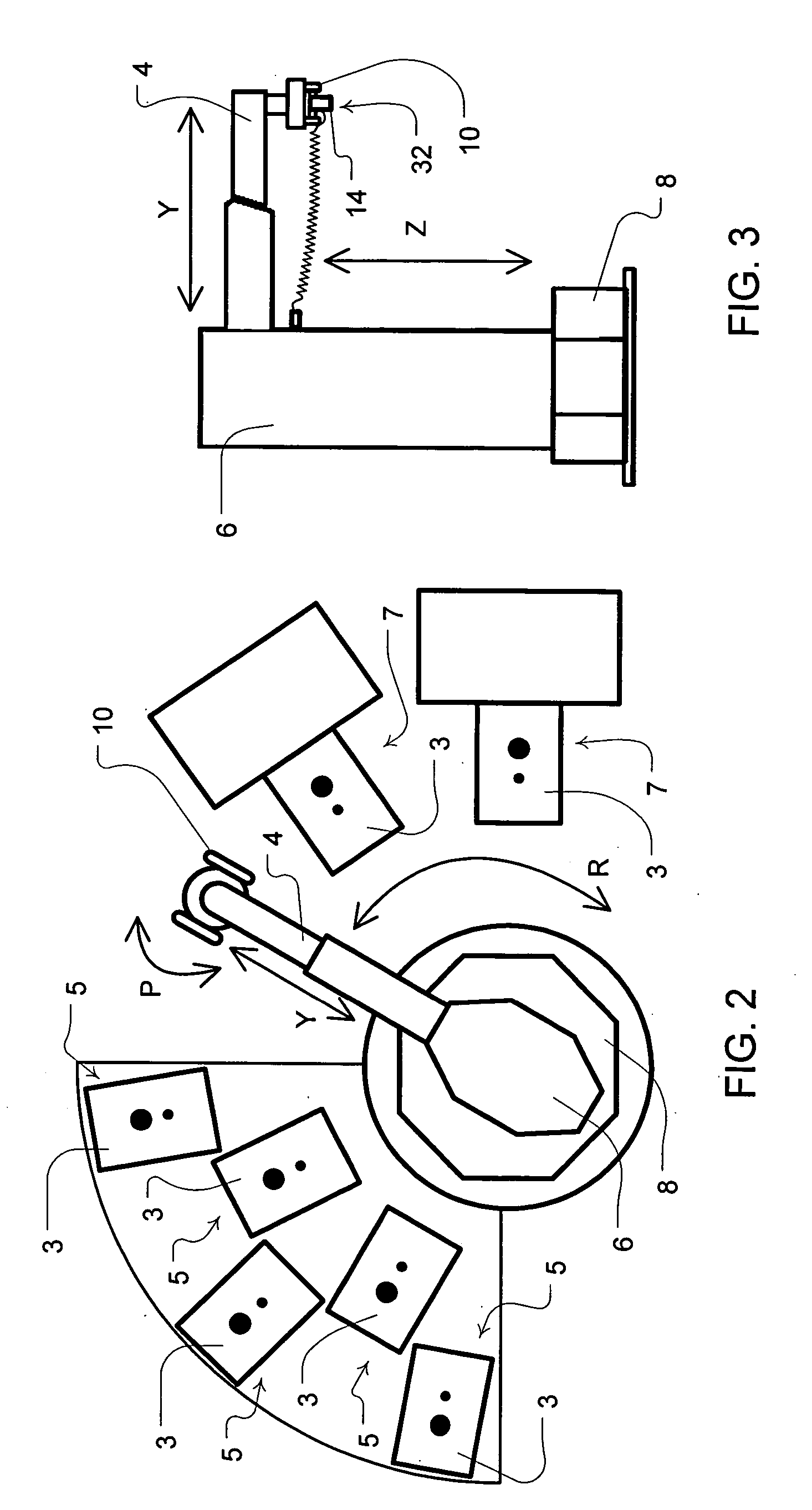Machine vision system for lab workcells
a lab workcell and machine vision technology, applied in the field of laboratory automation systems, can solve the problems of cumbersome operation, affecting the operation efficiency of the robot, and becoming a tedious task
- Summary
- Abstract
- Description
- Claims
- Application Information
AI Technical Summary
Benefits of technology
Problems solved by technology
Method used
Image
Examples
Embodiment Construction
[0028] Referring to the figures, where like numerals indicate similar features, a laboratory automation system of the invention includes a robotic manipulator 2 adapted for automated manipulation of a laboratory specimen or sample holder such as a microplate. For example, as illustrated in FIGS. 1-3, the preferred robotic manipulator 2 is a cylindrical robot. However, the robotic manipulator may alternatively include other robotic automation devices such as an articulated arm or SCARA arm.
[0029] The preferred cylindrical robot includes an arm 4, a tower 6, a base 8, a gripper 10, a controller 12 and an imaging device 14. As will be explained in more detail, the robot with the equipped imaging device 14 can home in on a target or a common pattern on multiple teaching plates, and identify and store each specimen holder position in a laboratory work cell associated with the teaching plates for later automated handling.
[0030] To these ends, the robotic manipulator 2 is preferably conf...
PUM
 Login to View More
Login to View More Abstract
Description
Claims
Application Information
 Login to View More
Login to View More - R&D
- Intellectual Property
- Life Sciences
- Materials
- Tech Scout
- Unparalleled Data Quality
- Higher Quality Content
- 60% Fewer Hallucinations
Browse by: Latest US Patents, China's latest patents, Technical Efficacy Thesaurus, Application Domain, Technology Topic, Popular Technical Reports.
© 2025 PatSnap. All rights reserved.Legal|Privacy policy|Modern Slavery Act Transparency Statement|Sitemap|About US| Contact US: help@patsnap.com



